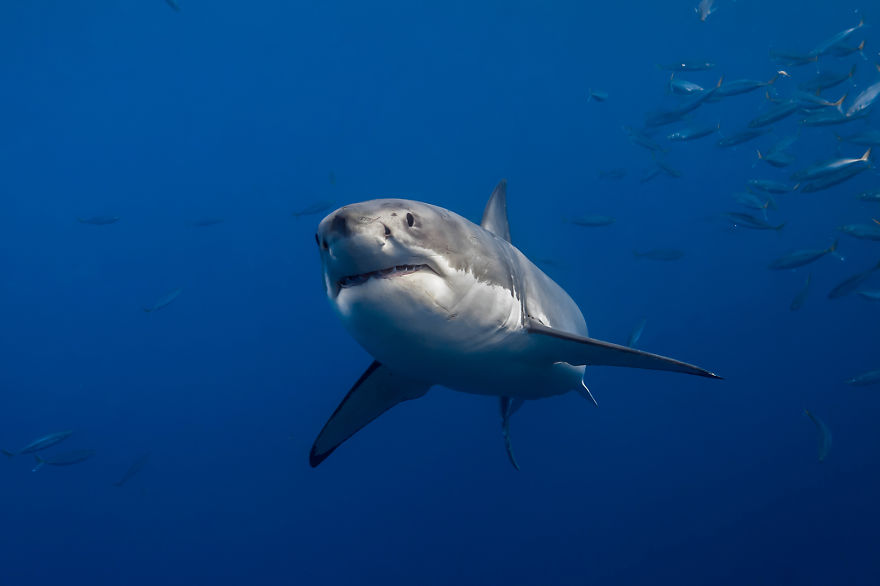
SPECIES: Carcharodon carcharias — Great White Shark
CLASSIFICATION: Vulnerable
There is a lot to be in awe of when you start to look at the fast facts of a Great White Shark. World's largest predatory fish. Females can grow up to 6m long and weigh 3000kg. They are an incredible hunter - well adapted to hunt with 300 serrated teeth. Have the ablility to detect blood up to 5km away. Their torpedo-shaped bodies making them capable of swimming up to 60km/h. Quite a list.
Great Whites are in fact warm-blooded and give birth to live young - whereas most other sharks are cold-blooded and lay eggs. They are found in oceans just about all over the world and inhabit mainly coastal waters. They do tend to be more frequent in waters around Fur Seal and Sea Lion colonies and move seasonally along the south and east Australian coasts, by the summer, have more than likely moved down to the southern Australian waters.
Great Whites are considered an uncommon shark species complared to other large sharks and looking at a trend across generations, it's thought that there has been a decline of around 20% over the last three generations of species. As apex predators, sharks play such an important role in the ecosystem by maintaining the species below them in the food chain and serving as an indicator for ocean health - meaning they help balance out species, competitors to ensure species diversity.
Photo: George Probst
